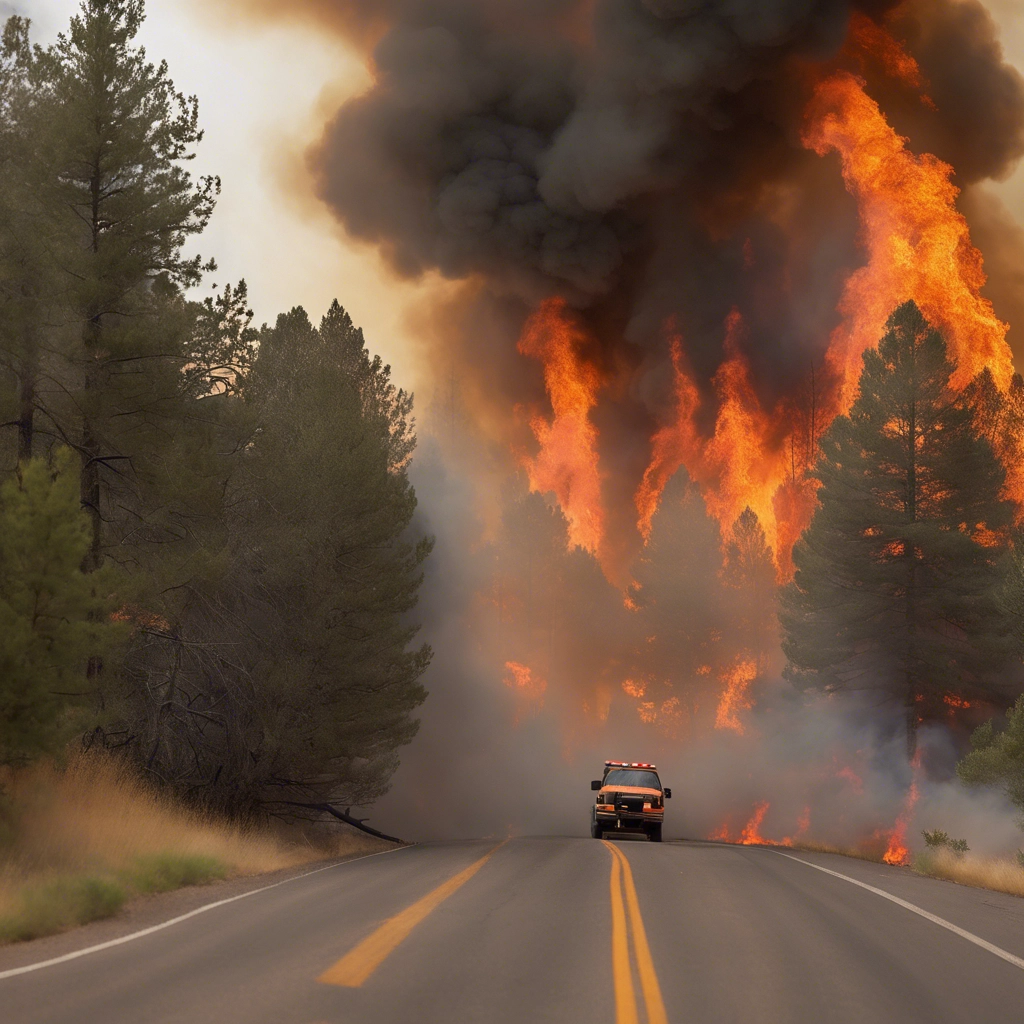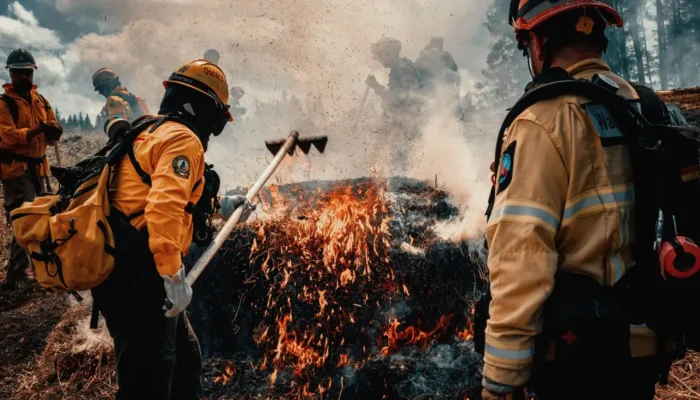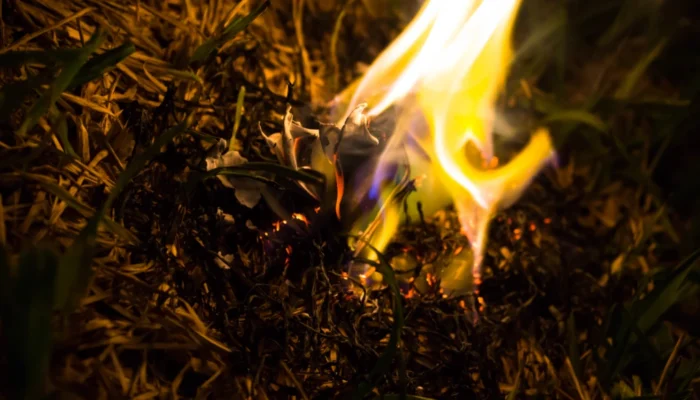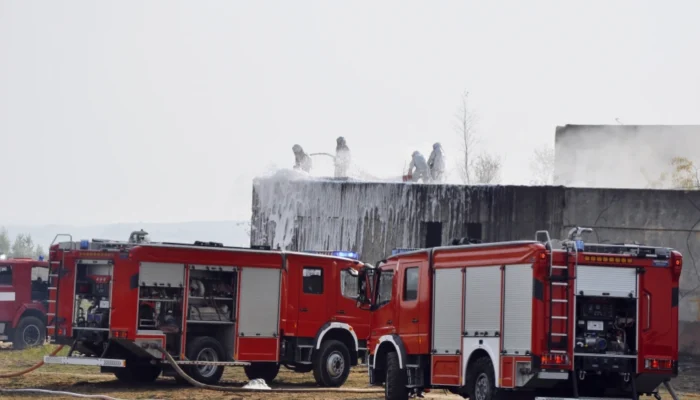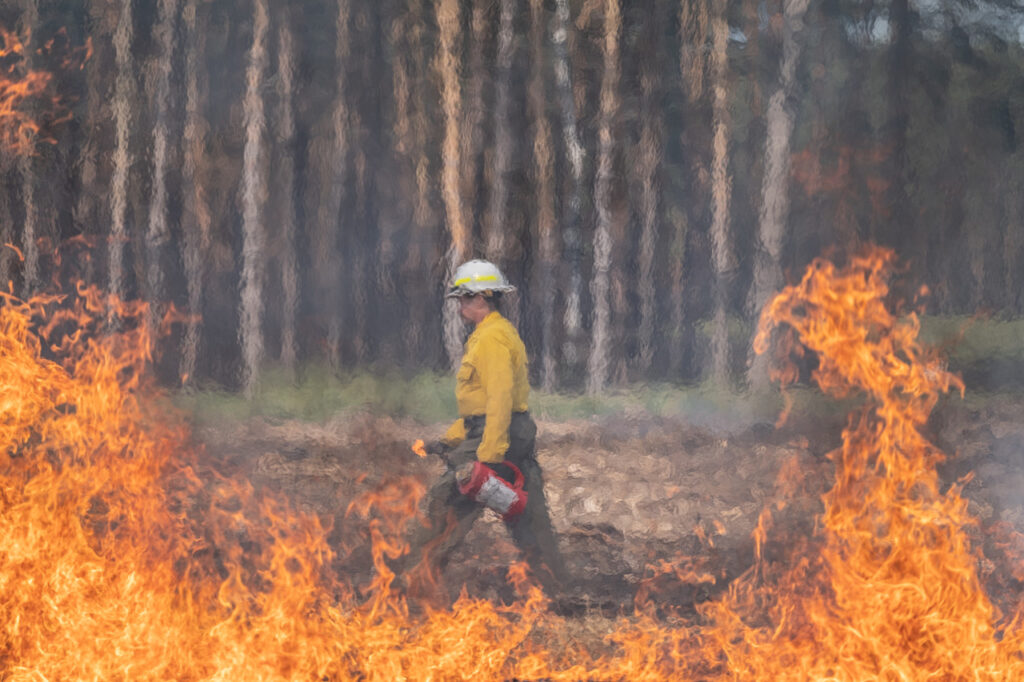
.
A wildfire is an uncontrolled burning process in an area not intended for this purpose. In contrast, prescribed burning is a deliberate and controlled action, using fire as a tool to achieve specific goals (such as habitat improvement, nature conservation, and fuel reduction) in a designated area. A wildfire continues to spread until it is extinguished, whereas the area of a controlled burn is strictly defined and contained by natural barriers and control lines that the fire is not allowed to cross. Both occur across a wide spectrum of intensities (not every prescribed burn is low-intensity, just as not every wildfire is highly intense) and fire conditions. However, both always generate smoke, which significantly differentiates them in several aspects.
Table of Contents
ToggleControl and manageability
The key and defined difference between wildfires and controll burns is that prescribed burns are planned in advance. Managers have the ability to decide when to initiate the operation or wait for more favorable conditions to minimize the detrimental impact of smoke on the environment. In this regard, targeted activities are undertaken in the field of “Smoke management”. An effective smoke management program is crucial in areas where there are legal obligations to ensure clean air and protect citizens from respiratory hazards.
In contrast, during a wildfire, which is unintended and poses a threat requiring immediate response and suppression, there is little that can be done regarding smoke in the surroundings because the fire spreads uncontrollably according to its behavior.
.
Intensity and characteristicss
To effectively control a fire, one must skillfully manage its intensity. Flames are more predictable when the burning process is not highly intense. The Burn Boss, responsible for safely and effectively conducting operations and achieving goals, is trained and skilled in applying appropriate ignition patterns to decide on fire characteristics such as flame height, duration, and intensity generated. This allows to control the intensity of combustion, which in turn translates into control over the intensity of smoke. Uncontrolled wildfires, driven by elemental force, generate immense intensity, affecting the color and density characteristics of the smoke plume, which tends to be darker and denser compared to prescribed burns.
It is important to note that before conducting prescribed burns, extensive preparatory work is undertaken, including thinning and removal of small trees and shrubs, or larger branches. These steps reduce the amount of fuel available to burn, thereby decreasing the fire intensity and helping ensure that the recommended fire produces less smoke.
.
Duration and Range
Wildfires can last for many days or weeks. Reports of peat fires lasting several months are not uncommon. Smoke from intense fires can be carried hundreds of kilometers away. Prescribed burning, due to its organized approach, typically lasts for a few hours within specified time frames. This generates less smoke, which only stays locally for a short time.
.
Health and environmental effects
Smoke from forest fires has a greater impact on air quality and human health because these fires typically have higher intensity and spread. In addition to emitting harmful substances like carbon monoxide, nitrogen oxides, and volatile organic compounds, forest fire smoke can also contain significant amounts of PM2.5 particles, which can penetrate the lungs and cause various health problems. Uncontrolled fires can also burn synthetic materials such as buildings or cars, releasing toxic chemicals.
Although controlled burns have lower intensity compared to wildfires, the smoke produced during these operations can still impact local air quality and public health. However, due to the controlled nature of these burns, their negative impact on the environment and public health is generally less than that of wildfires. Recent studies have shown significantly lower concentrations of PM2.5 in smoke from controlled burns compared to wildfire smoke. Leading researchers to conclude that increasing the number of controlled burns could benefit society by reducing future wildfire smoke. Additionally, planned burning allows for preparation for potential smoke effects, unlike intense and rapidly spreading wildfires. The relative harm from wildfires is greater than the risk of smoke from controlled burns for communities.
Regardless of the differences mentioned, they have one important thing in common. Both of them will be detected by our smoke detection systems. Therefore, in order not to generate unnecessary alarms, it is so important to report controlled burning in advance to the fire department and entities conducting fire monitoring of a given area.

